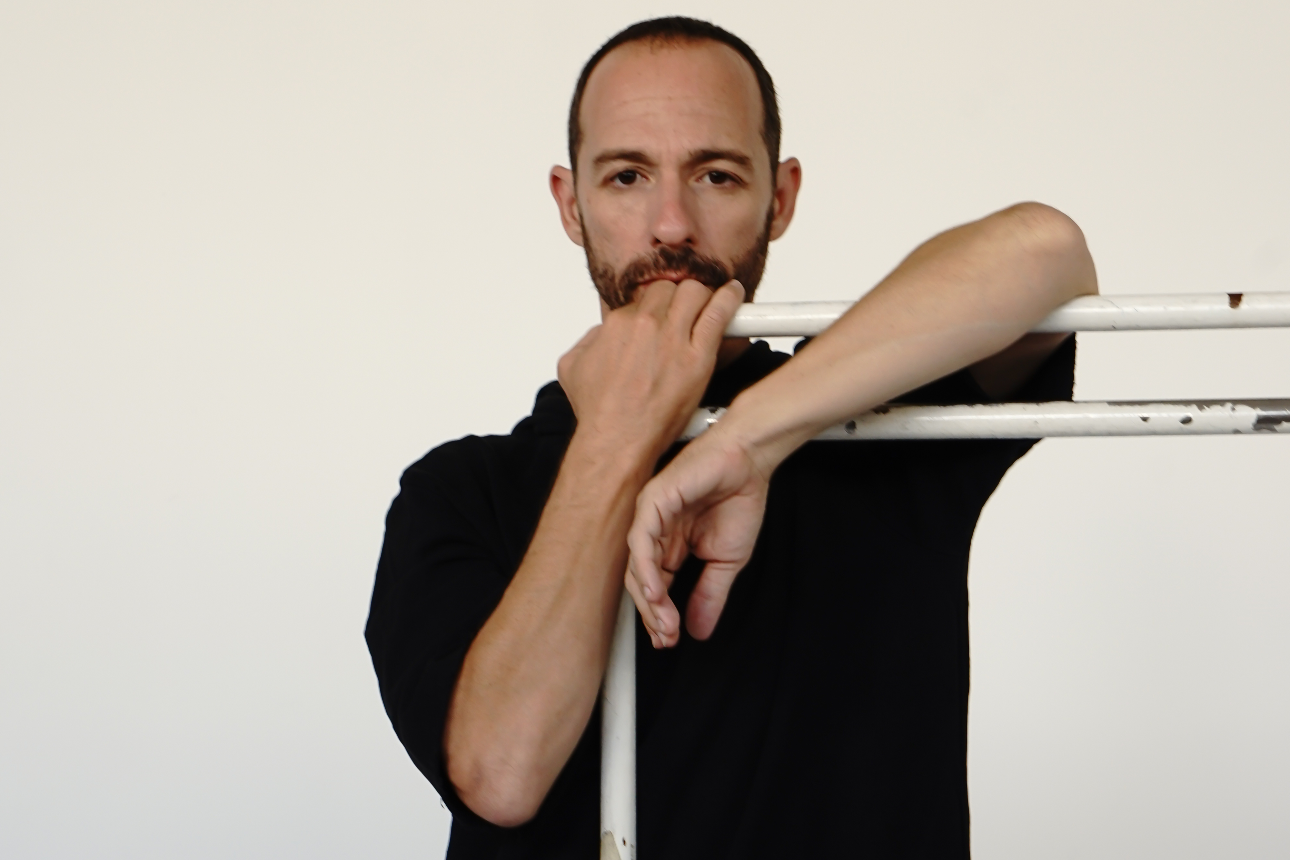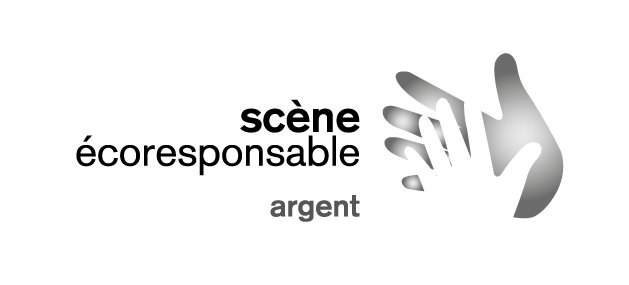We Love Arabs: interview with choreographer Hillel Kogan

After being cancelled at the beginning of the pandemic, We Love Arabs, a show by Israeli choreographer Hillel Kogan acclaimed on stages around the world, finally arrives in Vancouver. Prior to the performances taking place from April 13th to 15th, we had the opportunity to delve with him into deep questions related to his works and dance techniques, his political opinions, and the use of humor in art.
We Love Arabs is a work at the crossroads of dance and theatre. Can you tell us about this combination? As a choreographer, how do you incorporate theatrical aspects into your creations?
Hillel Kogan: The piece heavily relies on text. We are playing the characters of a choreographer and a dancer, and the scene is set in a studio. In this respect this is a theatre production, but it also explores the world of dance, as well as the conflict and the power dynamics between Jews and Arabs, through the example of an Israeli Jew and an Israeli Arab attempting to collaborate. I don’t have interest specifically in theatrical aspects, but I am using elements that are available to me to convey the message effectively. It is enough for me to belong to the field of contemporary dance, which has a very fluid definition: what is contemporary dance? What makes it contemporary? And what are the codes and the conventions of creation inside contemporary dance? By being a contemporary dance choreographer, I allow myself to use any materials from various art forms, but my goal is mainly to create a dance piece that delves into the experiences of dancers and choreographers, and how the field of dance intersects with social and cultural norms.
You created this show in 2013, and it continues to tour and be successful internationally. Does this show resonate with you today in the same way it did 10 years ago? Did you have the urge to create a play that deals with such a sensitive topic as the relationship between Arabs and Jews in Israel for a long time?
Hillel Kogan: It’s very exciting that this piece is still alive, performing and evolving 10 years after its premiere. With every interaction with the audience, I return as a new and changed person. I am not the same person as I was back in 2013. I have different layers and pieces of information in my body that I can use to update the piece. This allows for some space for improvisation as well. The fine tuning of the performance and its execution is affected not only by the personal changes that I experience over the years, but also by the ever-shifting political landscape that surrounds me. The conflict between Israeli and Arabs persists, but it changes, it gets worse and sometimes we forget about it. All of this information that we’re surrounded with in our society invades and contaminates the piece in a way. By performing this piece over and over again, I repeat to myself its messages more deeply, I own them more, so it resonates differently than it did when it was fresh and new. It’s like repeating a mantra over and over again, gradually believing in it more; and finding the right way to express my true emotions and thoughts, which are not as absolute and straightforward as the movement and the text that I perform. The complexity of my emotions and opinions about the situation continue to surface with each repetition of the performance.
I didn’t feel the urge to create a piece on a sensitive topic. Instead, I wanted to address a question that had been troubling me for some time: how was I, as an Israeli citizen, contributing to the ethnic and cultural conflict that surrounded me? As a choreographer, dancer, human being, I asked myself what I actively did in my life.
If I’m a person who believes that this conflict should end, who is ready to open his heart, to share and to give the hand to my Arab neighbor and to coexistence, who vote for the peace and for the end of the conflict, what do I do? Do I speak Arabic? I came to realize that I wasn’t taking any steps in my life to promote coexistence. I wasn’t setting an example, so why should I expect anything to change in society? And this was the urge to question my own behavior and its impact on society that motivated me to create a dance performance about coexistence through the collaboration of a Jewish choreographer and an Arab dancer. In a way, the piece is autobiographical, as I personally decided to work with an Arab dancer to create this performance. And of course, the power dynamics is a metaphor of the relationship between Israeli Jews and Israeli Arabs.
Although the theme of We love Arabs is serious and politically engaged, you infuse it with a good dose of humor and provocation. How do you manage to find this balance?
Hillel Kogan: I always use humor in my work. This is a conscious choice, but it’s also a natural part of who I am. I find joy in making people laugh and I enjoy telling jokes. I like to be a clown, I like irony. As a naturally cynical person, I appreciate the absurdity of life, society, and human nature. And I don’t believe that humor is incompatible with serious subjects or questions. Actually, I see it as a creative and artistic means to address and cool down emotions and serious issues. When dealing with difficult subjects such as the ongoing and violent conflict between Arabs and Jews, humor serves to temper the intense emotions that typically accompany these discussions. Israeli culture is full of artistic pieces – in dance, theatre, painting, literature, cinema, and music – that grapple with this conflict and the challenge of coexistence between majority and minority. And usually, many of these works tend to rely on the same cliches and evoke feelings of anger, violence, frustration, and impotence. I see humor as a way to distance oneself from these negative emotions, to invite different perspectives, and to add depth to the conversation. Through my work, I aim to encourage people to laugh at themselves, to criticize the status quo, and to ask the questions that I’m asking myself. I also use humor to expose the hypocrisy that I see in the Israeli art scene, and to encourage people to laugh about it so that we can collectively gain insight and understanding. I don’t know if there is a balance to find between seriousness and humor. It’s shaky, it’s off balance, it’s all the time pulling to one side or the other.
You will be presenting this show in English and French in Vancouver, but it also exists in Hebrew and Spanish. Performing a work in four languages, what an accomplishment! Are there any obstacles to performing in different languages? Do your acting and “intentions” change depending on the language you are performing in?
Hillel Kogan: Yes, they change because I have different levels of proficiency in each language and varying abilities to express myself and connect with the language I’m performing in. I always play an Israeli character, so Hebrew is the foundation and reference for me. When I perform in English or French, I don’t pretend to be British, French, Canadian, or any other nationality, but I do keep in mind that the language is not my native one. There’s something in the craft of using the language that needs to be organic to my identity as an Israeli and connected to the Hebrew reference. It’s like in poetry; you can’t translate words literally, as we sometimes enter the realm of creativity to find the right way to express things in different languages. It’s not just about the language, but also the culture of the audience in front of me. Different audiences have varying knowledge, approaches, and stereotypes about Jews, Arabs, dancers, etc. So yes, of course, all of this is integrated into the performance and also influences the use of language.
In addition to choreographic creations, you teach Gaga movement, an instinctive body language developed by Ohad Naharin within the Batsheva Dance Company and based on listening to the body and emotions. How do teaching and creation go hand in hand for you? Does one reinforce the other?
Hillel Kogan: Gaga is one of the body training techniques that I practice. I also practice flamenco, used to do ballet, and do a lot of yoga. All the movement classes and techniques that I’m learning make me the dancer and performer that I am today. They prepare my body for the virtuosity and execution required in my various pieces, keeping me in shape and helping me achieve things like strength, flexibility, and versatility. These are not just physical methods; they also have a spirit within them, and together they create a “cocktail of spirits” that shapes the dancer that I am. All these colors are present in my pieces, and I use them as tools to create, not just Gaga specifically. The Gaga movement is present because I worked with the Batsheva Dance Company; it has been a big collaboration for me and a discovery that I identify with. There are many tools within the Gaga language that I can use as a person, dancer, and choreographer. However, I do not have a ready-made language that I apply to create choreography. It is the accent that I have when I move, like the accent that I have when I speak. Teaching and creating go hand in hand for me, but not in a direct way. I cannot pinpoint exactly how teaching affects my creation or how creation affects my teaching. I perceive them as parallel occupations. But of course, the discoveries made through the research that I’m doing with the students I’m teaching, is also teaching me and inspiring me for my creations.
Co-presented with the Dance Centre, We Love Arabs will take place April 13-15, at 8pm, at the Scotiabank Dance Centre.
Performances in English on Thursday, April 13 and Saturday, April 15; The performance in French on Friday, April 14 is now soldout, but a waiting list has been opened. Send us an email at ventes(at)seizieme.ca or call our box office at 604.736.2616 to be added on the list. Please be advised that there will be no surtitles for this show. Info & tickets on the page of the show
Are you a professional dance artist and/or choreographer? Hillel Kogan is giving a choreography workshop to experiment with tools he draws upon during the creative process. This workshop is organized by The Dance Centre, on Thursday, April 13. Click here for more information and reservation.
